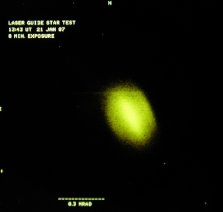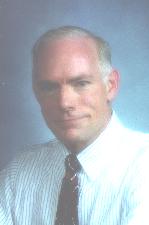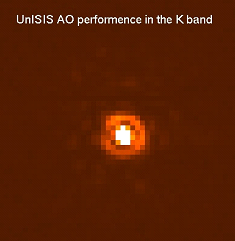- Instrumentation (1982-1990): In the early 1980's I began to work on projects aimed
at improving in real-time the image quality at ground-based telescopes. The was before any astronomical adaptive optics systems existed. My first instrument was a microprocessor controlled
tip-tilt system called ISIS which was built while I was working at the Institute for
Astronomy and was used at
Mauna Kea Observatory (Thompson and Ryerson 1983, Proc. SPIE, vol.445, p. 560). Following Foy & Labeyrie's
suggestion that laser guide stars might provide an excellent reference source for Adaptive Optics (AO) systems,
I initiated the first effort to project a sodium laser guide star into the mesosphere above Mauna Kea
Observatory (Thompson and
Gardner 1987, Nature, vol. 328, pg. 229). This was followed by 3 years of intense work with Chester
Gardner and his students in the Univ. of Illinois Electrical and Computer Engineering Dept. to define
many of the pioneering aspects of laser
guided AO systems, results that we published in the Proc. IEEE. Unknown to us at that time, a parallel laser guided AO development effort was underway
by the U.S. Air Force. How our work helped to trigger the declassification of this
Top Secret research is described in the section AO History. In the last 25 years laser guided
adaptive optics technology has been integrated into every large state-of-the-art ground-based
telescope, and it is one of the foundation-technologies of the next generation of giant telescopes. Those of us who pioneered this technology know what a struggle it was to convince conventional astronomers to incorporate AO technology into even a single large telescope. My initial requests for NSF funding were rejected (in 1987 and 1988), but my third funding request (submitted in 1989) was funded only after the US Air Force let it be known that they had already succeeded in building and operating their own laser guided adaptive optics system behind the cover of military secrecy.
|

|





